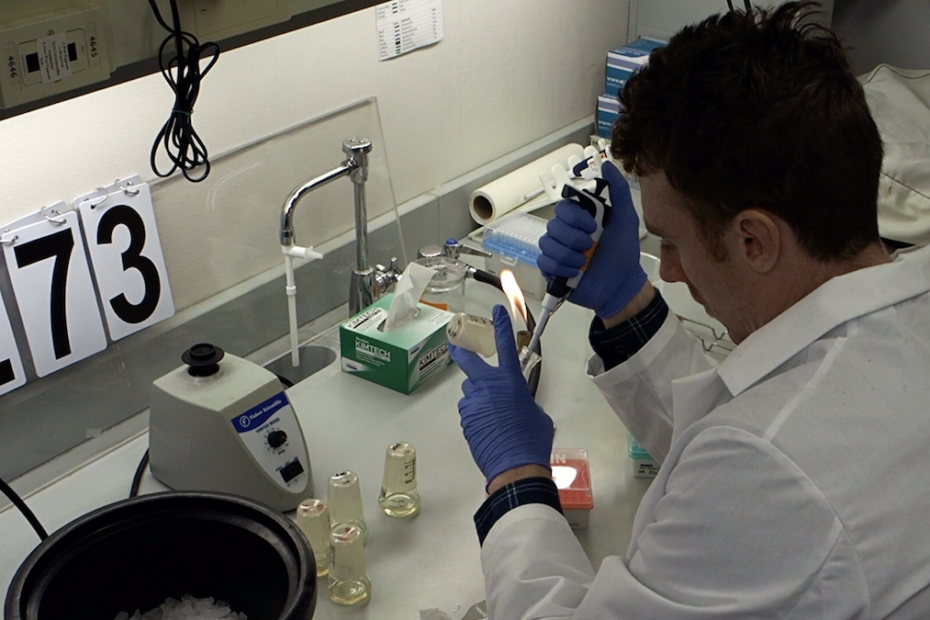We recently published an open access video protocol in the Journal of Visualized Experiments (JoVE) covering some of the core procedures we use in the LTEE: the daily transfers, archiving the populations, and competition assays. It was a great experience discussing the details of these protocols with Zack, Devin, Minako, and Mike from Michigan State. Two of my lab managers at UT Austin, Emmanuel (former) and Jack (current) also helped a ton. Jack, in particular, stars in the video and had to put up with me behind the camera calling for take after take.
Let’s get another shot of that from the reverse angle!
The Director of the LTEE
It’s time for your close-up Ara–3!
Check out the video and the article if you want to learn about the LTEE or if you are considering starting your own microbial evolution experiment. The video is also embedded in this post below.
I’m looking forward to sharing these materials with new researchers joining my group who are learning to help maintain the LTEE or beginning to study it, and also with researchers we send these ever-evolving E. coli.
Some highlights:
- We discuss aspects of the design of the LTEE that make it simple and sustainable.
- We document all kinds of expected results: how the flasks appear after growth and the optical densities the evolved E. coli populations reach in different media; photos of the colonies formed by the evolved LTEE populations on various agar plates; and agar plates showing E. coli that form red and white colonies competing for dominance over several transfers and what the changes mean in terms of relative fitness values.
- We created and an R package called fitnessR (available on GitHub) and an Excel spreadsheet (available as a supplemental file) for calculating relative fitness from co-culture competition experiment results.
- We describe alternative procedures for performing competition assays that can be used when the fitnesses of the two competitors are very similar or very different.
- We discuss some ways that the methods of the LTEE have been and are still being updated as technology has changed, and the potential advantages and disadvantages of other evolution experiment setups.
See also: If you are interested in LTEE methods, check out our protocols.io group which has media recipes and will gradually be populated with additional protocols. Rich also has a recent paper out that discusses the design of the LTEE, both in terms of procedures and as an experiment designed to answer questions about evolution (link).
Daily Transfers, Archiving Populations, and Measuring Fitness in the Long-Term Evolution Experiment with Escherichia coli Journal Article
Journal of Visualized Experiments, 198 , pp. e65342, 2023, ISSN: 1940-087X.
